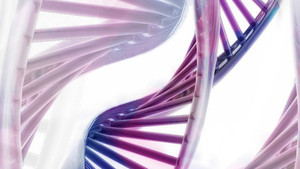A study of blood clot dissolving drug streptokinase has highlighted the mantra of ‘the process is the product’ in the case of biologicals [1].
Variation in recombinant streptokinase
Biosimilars/Research
|
Posted 22/05/2015
 2
Post your comment
2
Post your comment

Streptokinase is a long-established thrombolytic drug derived from streptococci species. It is the most widely used thrombolytic agent and remains popular in the developing world. Thrombolytic agents are used for the treatment of myocardial infarction (heart attack), thromboembolic strokes, deep vein thrombosis and pulmonary embolism.
The effects of natural streptokinase on the treatment outcome with patients suffering from myocardial infarction have been similar to other prominent thrombolytic agents, which is why it remains as an agent of choice in the treatment of myocardial infarction. Streptokinase is manufactured by recombinant DNA technology from Escherichia coli (E. coli) as a non-glycosylated polypeptide chain. Upon injection, it indirectly acquires the plasminogen activating property. The resultant activator complex, a highly specific protease, then converts other plasminogen molecules to their proteolytically active form plasmin, through a series of biochemically distinct steps. The plasmin, which is a non-specific protease, circulates in the system and helps to dissolve the blood clots.
No longer under patent, streptokinase is increasingly produced in E. coli as a ‘similar biologic’. However, there is increasing concern that versions of recombinant streptokinase produced in E. coli do not behave like streptokinase produced by Streptococcus equisimilis, which is the source of streptokinase used in the current WHO 3rd International Standard for Streptokinase, 00/464. This may be due to incomplete processing, resulting in retention of the amino-terminal methionine engineered for intracellular expression.
No biosimilars of streptokinase are approved in Europe, however, at least two ‘similar biologics’ are approved in India (Myokinase – Biocon and Shankinase – Shantha Biotechnics) [2].
The article that follows discusses the impact of an amino-terminal methionine on streptokinase activity.
Conflict of interest
The authors of the research paper [1] declared no conflicts of interest.
Editor’s comment
It should be noted that ‘similar biologics’ approved in India might not have been authorized following as strict a regulatory process as is required for approval of biosimilars in the European Union. The EMA (European Medicines Agency) regulatory requirements ensure the same high standards of quality, safety and efficacy for biosimilars as for originator biologicals, and also include a rigorous comparability exercise with the reference product.
Readers interested to learn more about safety assessments for biosimilars in Europe are invited to visit www.gabi-journal.net to view the following manuscript published in GaBI Journal:
Safety assessment of biosimilars in Europe: a regulatory perspective
Readers interested in contributing a research or perspective paper to GaBI Journal – an independent, peer reviewed academic journal platform – please send us your submission here.
Related article
Incomplete processing in biosimilar recombinant streptokinase
References
1. Thelwell C, Longstaff C. Biosimilars: the process is the product. The example of recombinant streptokinase. J Thromb Haemost. 2014;12(8):1229-33.
2. GaBI Online - Generics and Biosimilars Initiative. ‘Similar biologics’ approved and marketed in India [www.gabionline.net]. Mol, Belgium: Pro Pharma Communications International; [cited 2015 May 22]. Available from: www.gabionline.net/Biosimilars/General/Similar-biologics-approved-and-marketed-in-India
Permission granted to reproduce for personal and non-commercial use only. All other reproduction, copy or reprinting of all or part of any ‘Content’ found on this website is strictly prohibited without the prior consent of the publisher. Contact the publisher to obtain permission before redistributing.
Copyright – Unless otherwise stated all contents of this website are © 2015 Pro Pharma Communications International. All Rights Reserved.
Posted 03/06/2015 by Justyna K, GaBI Online Editorial Office
Response to ‘Caution - use the word 'biosimilar' carefully’
Thank you for your comment. We have adjusted the article to make it clearer that we are not talking about EU-approved biosimilars. Best Regards, Justyna
Posted 22/05/2015 by Prof Steffen Thirstrup, MD, PhD; NDA Advisory Board
Caution - use the word 'biosimilar' carefully
This title is misleading!
If differences in manufacturing leads to products which cannot pass a through comparability exercise with regard to manufacturing process, physio-chemical characteristics, immunogenicity and cannot be demonstrated to have similar clinical efficacy and safety cannot be termed biosimilars. The products described here are at best different versions of the same molecule, but they are in no way biosimilars as defined by European or US standards. Indian standards seems to differ substantially here (as in other places)
So please remember when use the term 'biosimilar' to indicate whether or not this biosimilarity is according to EU/US standards or any other regulatory standard. Otherwise articles like this will create misconceptions about biosimilars
General
Samsung Bioepis wins Pyzchiva case; Regeneron patent rulings threaten foreign biosimilars
Chinese biosimilars go global: growth, partnerships, and challenges
What is the future for the US biosimilar interchangeability designation

Biosimilars/Research Posted 05/06/2025
Biosimilar clinical efficacy studies: are they still necessary?

Biosimilars/Research Posted 27/05/2025
The best selling biotechnology drugs of 2008: the next biosimilars targets








Post your comment